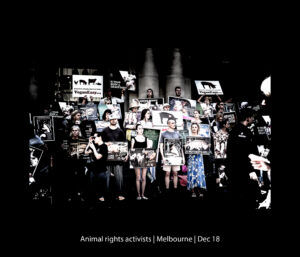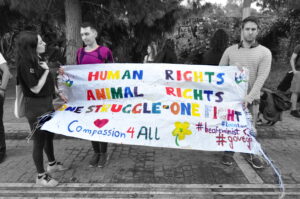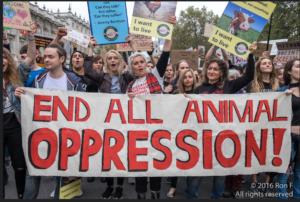Hello, it is I – the voice of reason, clarity, sanity, and all things divine. Just kidding, it’s me- the opposite of all of that. However, in insanity, there is oftentimes truth. Thus, I may be the perfect person to answer a question we should all be asking in the year 2020, which is “Should We Cancel Cancel Culture?”
What is cancel culture?
Let’s start off by descending into the meaning of what “cancel culture” really is by definition. As Google defines it, “Cancel culture (or call-out culture) is a modern form of ostracism in which someone is thrust out of social or professional circles- either online on social media, in the real world or both.” It is parallel to a canceled contract, an ending of a relationship that once connected someone to the opposing party. As Jonah Enel Bromwich wrote in the New York Times, “the word echoes the trend of on-demand subscriptions of content, from which a user can opt-out just as easily as they opt-in.”
Ironically, there is a performative point in canceling someone. To broadcast (via social media or in a large group setting) the cancelation of another by bringing attention to them in order to cease them gaining notoriety is irony at its best. Nonetheless, Cancel culture has gained momentum throughout the years at an honorary pace.
The Climb of Cancel Culture
We branded this practice of ostracization as “cancel culture” in 2017 after the cyber world went on a tirade of canceling people (mainly celebrities and public figures) as a way of demanding them to do and be better. Despite the term growing in 2016 and in 2017, notably on Black Twitter, the term really heightened online after Merriam-Webster, the American publisher of dictionaries and thesauruses, connected cancel culture with the #MeToo movement hashtag on Twitter, where it trended, in 2017.
While “canceling” someone, something, or a company has been widely exhibited on Twitter in addition to other public social media sites before 2017, it was never fully linked to the phrase “cancel culture” before then. In fact, Insider identified fewer than 100 tweets or threads, including the phrase “cancel culture” before 2018. Google Trends data shows that search interest in the phrase was not great until late 2018 and early 2019. By 2019, “cancel culture” was stitched into the blanket of society’s mainstream vernacular.
As of 2020, the term remains resistant to removal as it began trending once again on multiple social media platforms, amid the escalating opposition to racial injustice led by the protests motivated by the (in my opinion, wrongful) killing of George Floyd.
Pros of Cancel Culture
Albeit cancel culture can seem like an unfair, harsh, and unjust punishment gifted to those unlucky souls by one person who soon metamorphizes into 1000s of people, it can be birthed with a positive purpose in mind. For example, when the #MeToo movement struck pop-culture with a force so great that it shattered the images of many prominent Hollywood big shots like American film producer Harvey Weinstein, the cancelation of powerful people taking advantage of their superior positions was thrown into the spotlight like never before.
Though the #MeToo movement did not blatantly tell people “cancel this person” or “cancel doing this,” the intention was evident. Not only was it evident, but it was wildly successful. Because of cancel culture, Weinstein is no longer celebrated but is deservingly berated for his numerous acts of sexual abuse. One can even go as far as to argue that it is because of cancel culture that he was imprisoned.
Cancel culture grants access to seeing other people’s points of view. It allows people who find out about injustices to unite and dismember societal norms they find to be problematic for the betterment of the people. By voicing their disdain for someone’s actions on a platform where those in agreeance have the ability to band together, cancel culture demands retribution. This public scrutiny instrumentally influences these individuals to come face to face with their wrongdoing and respond accordingly. Cancel culture broke barriers by encouraging the public to speak openly about their opinions and to take control of what they would like the outcome to be. It provides a way for people to change the popular narrative.
Cons of cancel culture
As history tells us time and time again, in most cases, power brings forth turbulence just as much as it brings forth change. Nowadays, we hold the power to cancel someone or something in our hands. This power can go from progressive to regressive in a matter of hours.
When you grow up, it seems like you hear the phrase “all you can do is learn from your mistakes” repeatedly. It is when you have grown up that that perspective seems to vanish. But should it? Should our forgiveness of people and their mistakes be hinged upon that person’s age? I guess it all depends on the mistake made, their willingness to own up to that mistake, and their effort to change for the better, right? That’s a viewpoint you would think we could all get behind, but in a period where we are endlessly drenched in the conflicting viewpoints of others and immersed in a dense digital forest where canceling one another is more common than not, you might be surprised.
There is absolutely no excuse for racial, discriminatory, sexist, homophobic, or discriminatory behavior. Those who do expend such negativity out into the world should be corrected and, in some cases like Weinstein or R. Kelly, yes, canceled. The issue is that people have become so comfortable canceling one another that they have lost sight as to why they are canceling them. Are you canceling someone because you disagree with them even though they meant no ill will towards you, or are you canceling them because they actually are a deserving candidate?
The difference between 2017 and 2020 is that we as a society have diluted the good in canceling people. We no longer are just calling out people that have done bad things with no willingness to change. Now, in 2020, cancel culture has reached its climax. Every day, people will cancel anyone or anything they deem suitable for this popular punishment with little to no remorse.
Take Harold Uhlif, a previous University of Chicago professor and since resigned as the head of the Journal of Political Economy, as an example. Uhlif tweeted that Black Lives Matter “torpedoed itself, with its full-fledged support of #defundthepolice.” He carried on to suggest that instead of defunding the police, those in charge should “train them better.” In my opinion, nothing in this tweet was written with malice, yet hundreds of people signed a petition demanding him to resign from both of his jobs. A renowned economist, Paul Krugman, even spoke on the topic stating, “another privileged white man who evidently cannot control his urge to belittle concerns of those less fortunate.” Uhlif never belittled anyone less fortunate. He stated his opinion, and others disagreed with it. This does not make him racist nor apathetic to those less fortunate. As senior editor of Reason magazine, Robby Soave, said, “There was nothing racist or discriminatory in how he said it, but because he has some different views from the protesters, he must be a racist.”. It’s in these instances that we should be concerned with cancel culture. It’s in these instances that cancel culture does not act as an aide to breed justice but rather, toxicity.
Then again, there are people that have made mistakes warranting backlash. A prime example of this is Kevin Hart. Kevin Hart, a stand-up comic who rose to fame after his 2011 comedic tour Laugh at My Pain and progressed from comedian to actor soon after, fell victim to the violence of cancel culture in 2018 shortly after he was announced as the host of the next Emmy awards ceremony. Someone invited the world to read past tweets that divulged him using homophobic language. There was no misconstruing it. He had been offensive. Even if it was for a laugh, people did not find it funny. He made a mistake, and it came back to bite him- hard.
Fellow comedian Billy Eichner stood by him and other comedians who got called out for similar mistakes by tweeting, “people sometimes rush to judgment. I’m not into people being permanently ‘canceled’ over something like this…” Followed by “To me, ‘cancellation’ is childish. I’m into conversation, not cancellation. I’m into owning up to past mistakes, acknowledging blindspots and hurtful remarks, talking through it, discussing it, learning, moving past it, and making progress together”. In all honesty, I agree with him.
When people leap to conclusions without giving the person on the receiving end a chance to explain what they meant (Harold Uhlif ) or when people immediately judge someone on their past (Kevin Hart) with such intense hatred, closed ears, and opened mouths, it diminishes their chance of growth.
The Verdict
It is my belief that cancel culture can be used for good, but that is only if we allow it. We hold the power to teach just as much as we hold the power to hate. The two rarely work together for a reason. You can’t teach someone with hate just as much as you can’t expect someone to not slip up from time to time. I am not saying the R. Kelly’s and Kevin Spacey’s of the world should be given a second chance. No, they proved time and time again that their actions were not mistakes but choices. There is a monumental difference between a mistake and a choice. What I am saying is this: When we scrutinize someone for a mistake they’ve made and give them no chance to recover or grow from that mistake, then you’re not helping the situation; you’re hindering it. When you ruin people’s reputations, opportunities, hope, and lives because you disagree with something they said, you’re not being a hero. You’re being a hater.































